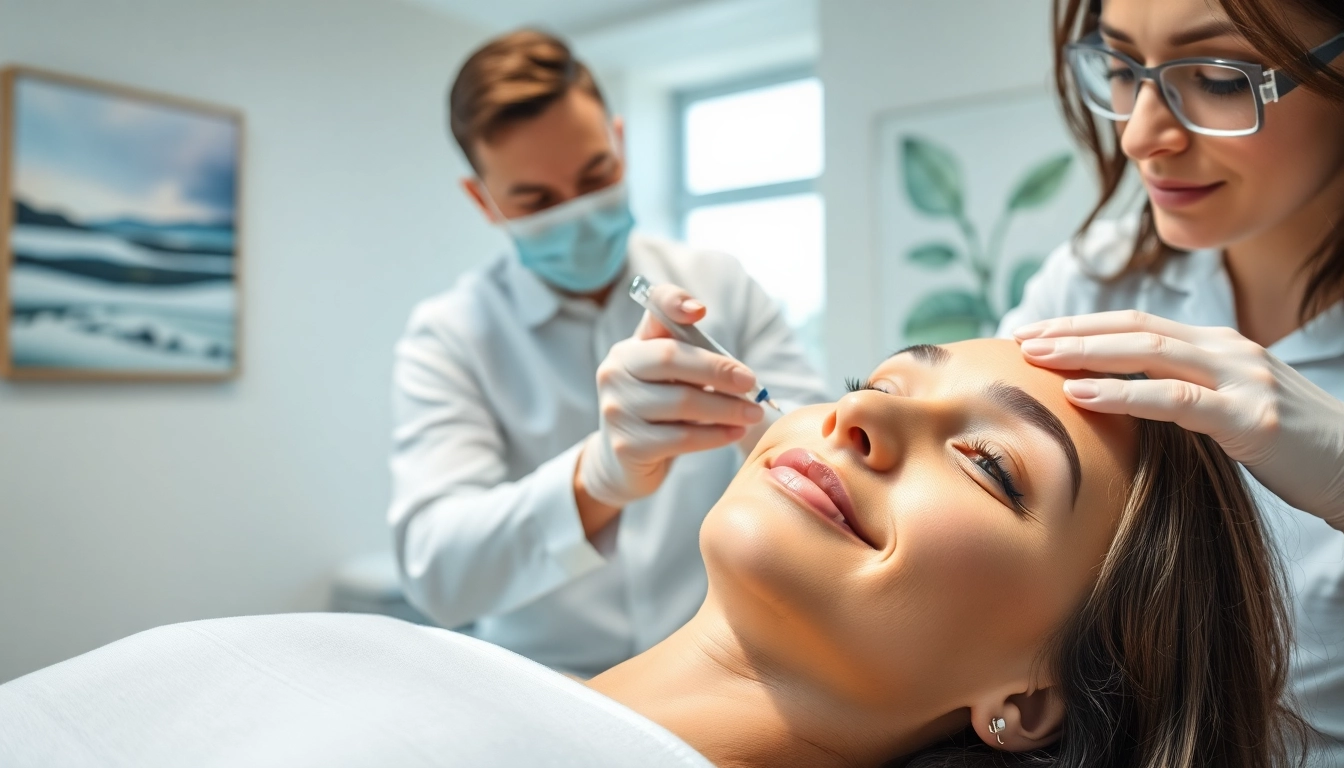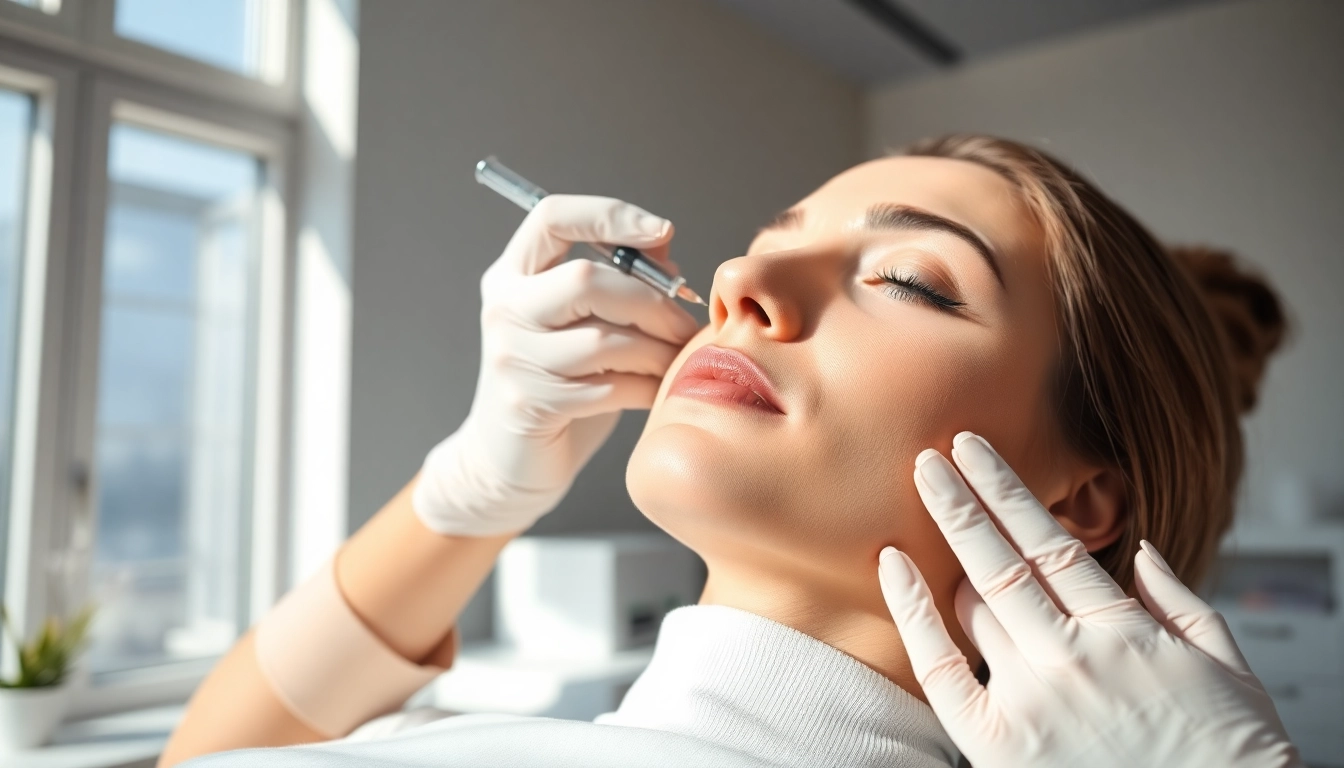Understanding Botox with Fillers
What Are Botox and Fillers?
Botox and dermal fillers are two of the most popular non-surgical cosmetic treatments available today. They serve different purposes but can be combined to achieve a more youthful appearance. Botox, a brand name for botulinum toxin type A, is primarily used to relax the muscles that cause wrinkles, particularly on the forehead, around the eyes, and between the brows. By blocking nerve signals to targeted muscles, Botox prevents contractions, resulting in smoother skin and a more relaxed expression.
In contrast, dermal fillers are injectables that restore lost volume, smooth out deep lines, and enhance facial contours. Made from various substances—most commonly hyaluronic acid—fillers help to plump the skin, improve elasticity, and provide structure to facial features. Together, Botox and fillers can achieve comprehensive facial rejuvenation, which is why many individuals opt for botox with fillers treatments.
How Do They Work Together?
The synergy between Botox and dermal fillers is one of the key reasons for their popularity. While Botox reduces dynamic wrinkles caused by movements, fillers address static wrinkles and volume loss. By targeting both aspects, practitioners can create harmonious results that enhance natural beauty without resorting to invasive surgery.
For example, using Botox to relax forehead muscles can redefine the upper facial area, making it look less tired or angry. Simultaneously, fillers can be strategically injected into the cheeks or nasolabial folds to restore volume and support, offering a balanced and youthful look. This combination approach ensures that not only are wrinkles softened, but the overall facial structure is also enhanced.
Key Benefits of Using Both Treatments
The combination of Botox and fillers comes with a multitude of benefits. First and foremost, it addresses different types of facial aging—both dynamic and static—offering a comprehensive solution to premature aging signs. Moreover, utilizing both treatments in one session can provide dramatic results without the need for extensive downtime. Patients typically experience minimal discomfort and can return to their regular activities soon after treatment.
Additionally, many people find that the longevity of their results is improved when using both treatments in tandem. While the effects of Botox usually last three to six months, fillers can provide results for six months to two years depending on the type and area treated. This means fewer treatment sessions are needed to maintain a youthful appearance, leading to increased patient satisfaction.
Common Applications of Botox with Fillers
Facial Contouring and Volume Restoration
One of the most sought-after applications of Botox and fillers is facial contouring. As we age, our face loses volume, particularly in the cheeks and temples, leading to a flattened appearance. Fillers can restore this volume by adding lift and contour to the face, enhancing the overall shape and definition.
For instance, by injecting fillers into the cheeks, practitioners can create an uplifted effect that can soften the appearance of jowls. Additionally, the chin and jawline can also be enhanced, giving a more structured profile. The combination of Botox to relax any overactive muscles that may contribute to the sagging, along with fillers for volume restoration, produces a more youthful and vibrant look.
Reducing Fine Lines and Wrinkles
Fine lines and wrinkles are among the most common skin concerns, and they can significantly impact one’s self-esteem. Botox is highly effective for reducing the appearance of crow’s feet, forehead lines, and frown lines. When used alongside fillers, which can address deeper wrinkles such as dynamic smile lines or marionette lines, patients can experience a vast improvement in their skin’s texture and smoothness.
This dual approach not only addresses the superficial lines but also works on deeper set wrinkles, allowing for a more comprehensive anti-aging strategy. Patients notice visible improvement in their skin’s overall appearance, creating a smoother and fresher look.
Enhancing Lip Volume and Shape
Lip enhancement is another common request among those seeking a youthful appearance. While fillers can effectively augment lip volume and shape, adding Botox to the treatment can enhance results by softening the surrounding lip muscles. This combination can help achieve a more defined lip line while avoiding the over-inflation that can be seen with fillers alone.
Using fillers to plump the lips provides immediate volumization, while Botox can prevent muscle movement that might lead to asymmetry or “lip droop.” Patients enjoy full, shapely lips that complement their facial features beautifully.
Choosing a Practitioner for Botox with Fillers
What to Look for in Credentials and Experience
When considering Botox and fillers, it is crucial to choose an experienced practitioner. Look for someone board-certified in dermatology or plastic surgery, as these professionals possess the necessary training and knowledge to administer these products safely and effectively. Additionally, experience matters; practitioners with a proven track record of successful treatments will have the skills needed to achieve natural-looking results.
Ask potential practitioners about their specific experience with combined treatments. Before-and-after photos of previous patients can provide insight into their skill level as it relates to your desired outcomes. Reading online reviews and seeking referrals from friends can also help you feel more confident in your choice.
Consultation Process: What to Expect
The consultation is a critical component of the treatment process. During this time, patients can discuss their desired outcomes and any concerns with the practitioner. A thorough examination of the facial structure and skin condition will also be conducted. The practitioner will outline a tailored treatment plan that includes the types of products to be used and where they will be injected.
This meeting is also an excellent opportunity to ask about the types of results you can realistically expect. Every patient’s anatomy is different; thus, individual results can vary significantly. A good practitioner will manage your expectations and provide a comprehensive understanding of the procedure.
Understanding Risks and Safety Measures
Like any cosmetic procedure, Botox and filler injections carry some risks. Common side effects may include bruising, swelling, and temporary redness at the injection site. A qualified practitioner will take appropriate measures to minimize these risks, such as using thin needles and applying ice or cold packs post-treatment. It’s vital to discuss any medical conditions or allergies during the consultation to ensure a safe treatment plan.
Other potential risks include infection and asymmetry in the results. However, these occurrences are rare when choosing an experienced professional. Inquire about their protocols for managing complications should they arise, and ensure that their facility maintains high standards of hygiene and safety.
Caring for Your Skin Post-Treatment
Immediate Aftercare Tips
After receiving Botox and filler injections, adhering to the aftercare instructions is crucial for optimal results. Patients are generally advised to avoid touching the treated areas for at least 24-48 hours to minimize the risk of irritation or infection. Additionally, it’s best to refrain from strenuous exercise and activities that can increase blood pressure such as hot baths and saunas, as these can exacerbate swelling and bruising.
Cold compresses may be applied to reduce swelling or discomfort. However, it’s essential to avoid laying down flat for the first few hours post-treatment to allow the products to settle correctly.
Long-term Care for Lasting Results
To extend the duration of your results, consider implementing a consistent skincare routine tailored to your skin type. Regularly using sunscreens, antioxidants, and moisturizers can enhance skin quality over time, ultimately supporting the effects of your treatments. Staying hydrated and maintaining a healthy lifestyle—with a balanced diet and regular exercise—can also play significant roles in preserving a youthful appearance.
Additionally, consider scheduling maintenance treatments as recommended by your practitioner to keep your skin looking its best. Regular follow-ups will ensure that any adjustments or touch-ups are done to maintain your aesthetic goals.
Recognizing Potential Side Effects
Possible side effects from Botox and fillers can include mild bruising, swelling, and tenderness around the injection sites. More serious but rare complications can manifest as difficulties with swallowing, breathing, or muscle weakness if the Botox spreads beyond the intended area. Immediate medical attention is essential if such symptoms arise.
Educated patients will monitor themselves after treatments and be aware of what constitutes normal post-injection responses versus concerning signs necessitating follow-up with the practitioner.
Comparative Cost and Treatment Frequency
Investment vs. Benefits of Botox with Fillers
When contemplating any aesthetic treatments, many individuals weigh the costs against the benefits. Botox is typically charged per unit, with the average cost ranging from $10 to $20 per unit, depending on the geographic location and practitioner experience. Fillers can range from $500 to $1,500 per syringe, depending on the type used and the area treated.
While these costs may seem substantial, the investment often pales compared to the psychological and social benefits of looking one’s best. Many patients report increased confidence and improved self-esteem after treatments. Given the longevity of these treatments, particularly fillers, the value derived can justify their cost.
How Often Should You Schedule Treatments?
For optimal and consistent results, understanding the frequency of treatments is essential. While Botox typically lasts between three to six months, fillers can last anywhere from six months to two years, depending on the type used. Regular Botox sessions generally ensure that muscle activity—and thus wrinkle formation—is minimized over time.
Patients should discuss a personalized treatment schedule during their consultation, as individual factors such as skin condition, age, and treatment goals greatly influence suggestions for follow-ups.
Budgeting for Aesthetic Enhancements
Creating a budget for aesthetic enhancements includes considering not only the immediate financial outlay but also long-term maintenance costs. Patients may wish to set aside funds quarterly or bi-annually to ensure they can afford the maintenance treatments required for looking their best. Breaking down costs into a yearly plan can also be beneficial, allowing individuals to save progressively for their aesthetic goals, thus ensuring that their budget aligns with their beauty aspirations.
With clear goals and awareness of costs, patients can navigate their aesthetic journey with less stress while enjoying the beauty benefits that Botox and fillers provide.














Leave a Reply